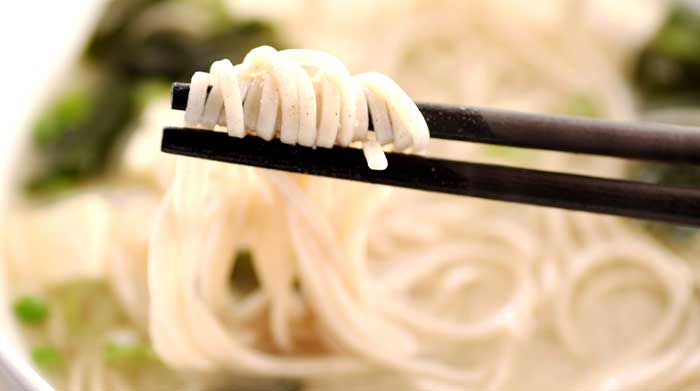Tokyo is a global hub for tasty and delicious noodles and the city's population could go on strike and stop functioning without its famous noodles. Tokyo urbanites gobble down incredible amounts of noodles every single day for their entire lives. Some of their favorites include the ever common staple soba as well as udon. Japanese are also very fond of Chinese noodle variant known as ramen. A large variety of noodle shops operate around whole of Japan ranging from tachikui (or more popularly known as standing and eating parlor) bars specializing in sale of specialty noodles to highly upper class restaurants filled with shining pottery and elaborate gardens. The noodles bars require you to purchase tickets early for a full meal while in posh restaurants, you can tailor your orders from the ever friendly waiter or waitresses.
Soba, the traditional Japanese noodle, are thin in texture with brownish colour. Udon, on the other hand, is the complete opposite where it is thick and white. Kanto and Tokyo region is the origin for Soba, where it is closely linked. Udon is said to come from Kansai, regions near Osaka. Nevertheless, restaurants operators with noodle serving on their menu will have both noodle styles. Some of the typical noodle serving styles includes Kake soba or udon, where noodles are served inside a huge round bowl filled with bonito flavor soup base. Mori soba or udon is the complete opposite where noodles are served cold and laid on bamboo mat. It is the perfect noodle serving one can have during warm weather which instantly refreshes the mind and soul.
A very popular cold noodles liked by many local Japanese is zaru soba. It comes with dried seaweed as the common topping. A side dish accompanying the noodle is a cool broth filled in a small cup and spring onions served with wasabi on a small plate. The best method for eating zaru soba is dipping the noodles into the cool broth after having gently stirring the liquid. It is a mistake to pour the cool broth all around the noodles unless you want to make a mess around the dining table. Towards the final part of the meal, the waitress or server would provide a small glass of sobayu, also known to many as the boiling water used to heat up the noodles, in order for the patron to mix the broth with water. You can then enjoy you glass of broth mixture similar to enjoying a cup of hot tea.
Not many people are aware of the origins of Ramen. In actual fact, it comes from China, but has gained widespread adoption and recognition in Japan. The most basic form of Ramen is noodle served in a huge bowl of broth. The broth has many flavor variants. Topping can be added to the noodles such as sliced roasted pork meat (chashu), bean sprouts (moyashi) or leeks (negi). Ramen toppings are wide and varied and do not be surprise to see Ramen served with fresh butter corn from Hokkaido or wontons or even Chinese vegetables. Each person has their own favorite taste of Ramen and is loyal devotee to their own ramen flavor, but one thing for sure is that Western instant noodles preparation procedures are poor choice of noodle selection compared to the real delicious ramen.
Eating loudly and making loud sounds when you are in the middle of a meal is looked down upon as rude in Western countries. However, when you are in Japan, be sure to slurp down you noodles as it serves as a cooling tactic for hot noodles and is said to enhance noodle flavor.

